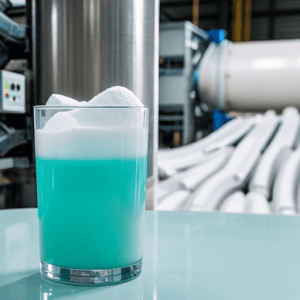
Scaling up excipient production is a critical step for pharmaceutical manufacturers aiming to meet increasing market demands while maintaining product quality and regulatory compliance. This process involves numerous challenges and requires meticulous planning, robust quality control measures, and strategic partnerships. In this article, we will explore the best practices for scaling up excipient production, drawing insights from industry experts and real-world examples.
Understanding the Importance of Excipients
Excipients play a crucial role in pharmaceutical formulations, affecting the drug’s stability, bioavailability, and overall efficacy. As the demand for pharmaceuticals grows, so does the need for high-quality excipients. Scaling up excipient production is not merely about increasing volume; it involves ensuring that the quality and consistency of the excipients are maintained across larger batches.
Best Practices for Scaling Up Excipient Production
1. Work with Experienced Partners
One of the most effective strategies for scaling up is to collaborate with experienced Contract Development and Manufacturing Organizations (CDMOs). These partners bring invaluable expertise in planning and executing the scale-up process. According to Ascendia Pharmaceuticals, “Partnering with a CDMO eliminates many concerns, as they already have the required infrastructure and experience to pivot from small-scale to large-scale manufacturing”[1].
2. Plan for Regulatory Compliance Early On
Regulatory compliance is a critical aspect of scaling up. It is essential to plan for compliance from the outset to avoid delays and potential issues later. This involves understanding the regulatory requirements for excipients in different markets and ensuring that all processes and documentation meet these standards. “Regulatory compliance should be integrated into the scale-up process from the beginning to ensure a smooth transition to commercial production,” advises a whitepaper on best practices for pharmaceutical manufacturing[2].
3. Establish Robust Quality Control Measures
Quality control (QC) becomes even more crucial when scaling up production. Implementing stringent QC measures at every stage of production helps ensure that the final product meets all regulatory requirements. This includes defining critical quality attributes (CQAs) and critical process parameters (CPPs) and continuously monitoring them. “Maintaining product quality is essential, and this includes establishing stringent QC measures and paying attention to process development and validation,” notes Ascendia Pharmaceuticals[1].
4. Pay Attention to Process Development and Validation
Developing and validating the manufacturing process is a key part of scaling up. This involves defining process parameters, establishing critical control points, and testing for process efficacy. Robust documentation is essential to comply with current Good Manufacturing Practices (cGMP). “The scale-up process should be risk-based and begin with a baseline of product knowledge acquired from prior stages of the development program,” emphasizes a study on the Quality by Design (QbD) approach[4].
5. Understand the Impact of Raw Materials
Raw materials can vary in quality and composition, which can significantly impact the manufacturing process. It is crucial to understand how different raw materials will affect production and to source materials from reliable suppliers. “The impact of material attribute differences that may result from multiple suppliers needs to be assessed,” highlights a whitepaper on pharmaceutical manufacturing[2].
6. Be Prepared for Changes in Your Manufacturing Process
Scaling up often requires modifications to the manufacturing process. It is essential to have a plan in place to make these changes quickly and efficiently. “As you scale up, you will likely need to alter your manufacturing process. Preparedness for these changes is key to maintaining quality and efficiency,” advises Ascendia Pharmaceuticals[1].
7. Design Your Facility for Scalability
Facility design is a critical factor in scaling up production. Ensuring that your facility is scalable allows for easy adjustments and expansions. “Make sure that the facility is scalable so that changes can be made easily,” recommends Ascendia Pharmaceuticals[1].
Challenges in Scaling Up Excipient Production
Scaling up excipient production comes with its own set of challenges, including:
- Ensuring Regulatory Compliance: Regulatory requirements can be complex and vary by region. Planning for compliance early on is essential.
- Minimizing Costs: Efficient use of raw materials and maximizing production efficiency are crucial to minimizing costs.
- Maintaining Quality: Establishing stringent QC measures and validating processes are essential to maintaining product quality.
- Remaining Flexible: Supply chain issues, raw material quality, and equipment problems can all pose challenges. Having a contingency plan is vital.
Real-World Example: Scaling Up Orodispersible Mini-Tablets
A study on the scale-up of orodispersible mini-tablets (ODMTs) provides a practical example of the challenges and solutions in scaling up excipient production. The study involved transferring the production process from a compaction simulator to an industrial rotary tablet press. The researchers monitored critical quality attributes such as tensile strength, mass, and disintegration time. They found that disintegration time increased with batch size, highlighting the importance of monitoring product temperature and adjusting process parameters accordingly[5].
Pullquote
“Partnering with a CDMO eliminates many concerns, as they already have the required infrastructure and experience to pivot from small-scale to large-scale manufacturing.” — Ascendia Pharmaceuticals
Conclusion
Scaling up excipient production is a complex but essential process for pharmaceutical manufacturers. By following best practices, such as working with experienced partners, planning for regulatory compliance, and establishing robust quality control measures, manufacturers can successfully scale up production while maintaining product quality and efficiency. Understanding the impact of raw materials and being prepared for changes in the manufacturing process are also crucial. With careful planning and execution, pharmaceutical companies can meet the growing demand for high-quality excipients.
Cited Sources
- Ascendia Pharmaceuticals. “How to Scale Up Pharmaceutical Manufacturing.” 2022-12-07.
- NCBI. “Best Practices for the Development, Scale-up, and Post-approval.”
- ScienceDirect. “Impact of Excipients on Batch and Continuous Powder Blending.” 2021-05-01.
- NCBI. “Scale-Up Strategy in Quality by Design Approach for Pharmaceutical Blending Process with Discrete Element Method Simulation.” 2019-06-06.
- ScienceDirect. “Transfer and Scale-up of the Manufacturing of Orodispersible Mini-Tablets.” 2021-06-01.
Citations:
[1] https://ascendiapharma.com/newsroom/how-to-scale-up-pharmaceutical-manufacturing
[2] https://www.ncbi.nlm.nih.gov/pmc/articles/PMC4037495/
[3] https://www.sciencedirect.com/science/article/pii/S0032591021001170
[4] https://www.ncbi.nlm.nih.gov/pmc/articles/PMC6632066/
[5] https://www.sciencedirect.com/science/article/abs/pii/S0378517321004415

